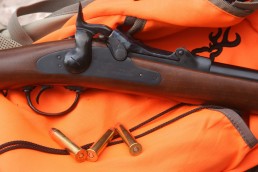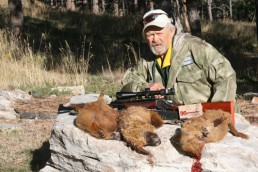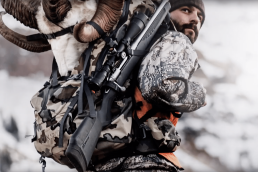Springfield Trapdoor Rifle
SHARE THIS POST
Developed from scrap parts and a rebuilding project incorporating muzzle-loading U.S. Army rifles of the day, the Springfield Trapdoor chambered in 45-70-405 Government has managed to stay alive with both collectors and shooters alike. My project did not start with Uberti, the builder of some very fine and accurate classic firearms, but rather my desire to own a Trapdoor. I have been a lover of single-shot firearms forever. I was interested in the Springfield Trapdoor rifle as applied to hunting and general target shooting with both handloads and factory fodder. Just owning one is an interesting event itself.
The history of this rifle is a bit long and complicated. I will abbreviate a series of events that concluded with the Springfield Trapdoor rifle being the selected weapon of U.S. Army troopers for 27-odd years. During that time, the great Apache war chief Geronimo carried the rifle, as well as special units of UD Army Indian scouts. With the Trapdoor found to be reliable, tough as hails, and easy to learn and shoot, what was not to like about the full-length, cavalry-style carbine? There were some issues with ammunition during the battle of Greasy Grass (Custer’s Little Big Horn). The ammunition, being a rim fire type, center pin punched affair, would freeze up in the chamber, rendering the rifle a combat baseball bat of sorts. With the proper development of center fire primed cartridges, those kinds of issue went away in short order.
While a bit hard to find except for collector guns that cost the price of a college education, Uberti, the Italian gun builder known for building outstanding recreations of bygone era firearms, offered up the Springfield Trapdoor carbine. This allowed me to move ahead with a hands-on field review of this interesting game getter or public defender alike.
My example of the Springfield Trapdoor retains a case-hardened receiver and steel butt plate, making for a striking look. The wood (walnut) surface is a straight grain selected blank that allows the rifle to retain toughness as a fighting tool, or in my case, just hanging together afield.
Sights on this rifle are of the Buffington military design, are serviceable, and will accomplish several sighting tasks depending on how it is used. During the basic zeroing of the rifle, which require no changes from the factory settings, the rifle shot a bit high. But cutting a fine sight picture by way of the thin front sight blade, I was able to easily control my groups to a dead-on 100-yard impact point. At my age, pushing the mid-80s, my gun eye is not what it once was. However, the Buffington rear sight on the Trapdoor 45-70 has taken care of that for me.
When the sight is set to the ladder up, long-range position, making for a sight that can deliver beyond 1000 yards, a small peep appears at the bottom of the ladder. This peep sight addition was gold to me, as the small notch was a challenge under lower light. The peep sight, much like the sight picture of the old school Williams receiver sight, took me back about 50 years to an age when glass sights almost didn’t exist. Outfits like Lyman and Williams owned the receiver sight market among deer hunters. In effect, I had three sighting systems by way of the rear sight, which indicated to me that this carbine had been well-thought-out by its designers, even if it was born of an old musket design.
Trapdoor as a name came from the fact that the Springfield 45-70 and previous 50-caliber models use this simple latched, hinged door system that opens the entire upper face of the receiver. Pulling the hammer, which is massive to the rear, exposes a side latch on the receiver to unlock the door which swings up and forward, exposing a loading ramp that allows easy access to the chamber. With a round chambered, the shooter simple drops the door back down to lock position and lowers the hammer to a half-cock, which keeps the firing pin off a live round. This half-cock position is, in effect, the safety system on the rifle. I was raised on old Winchester 73s and 94s, so the hammer half-cock position was nothing new to me.
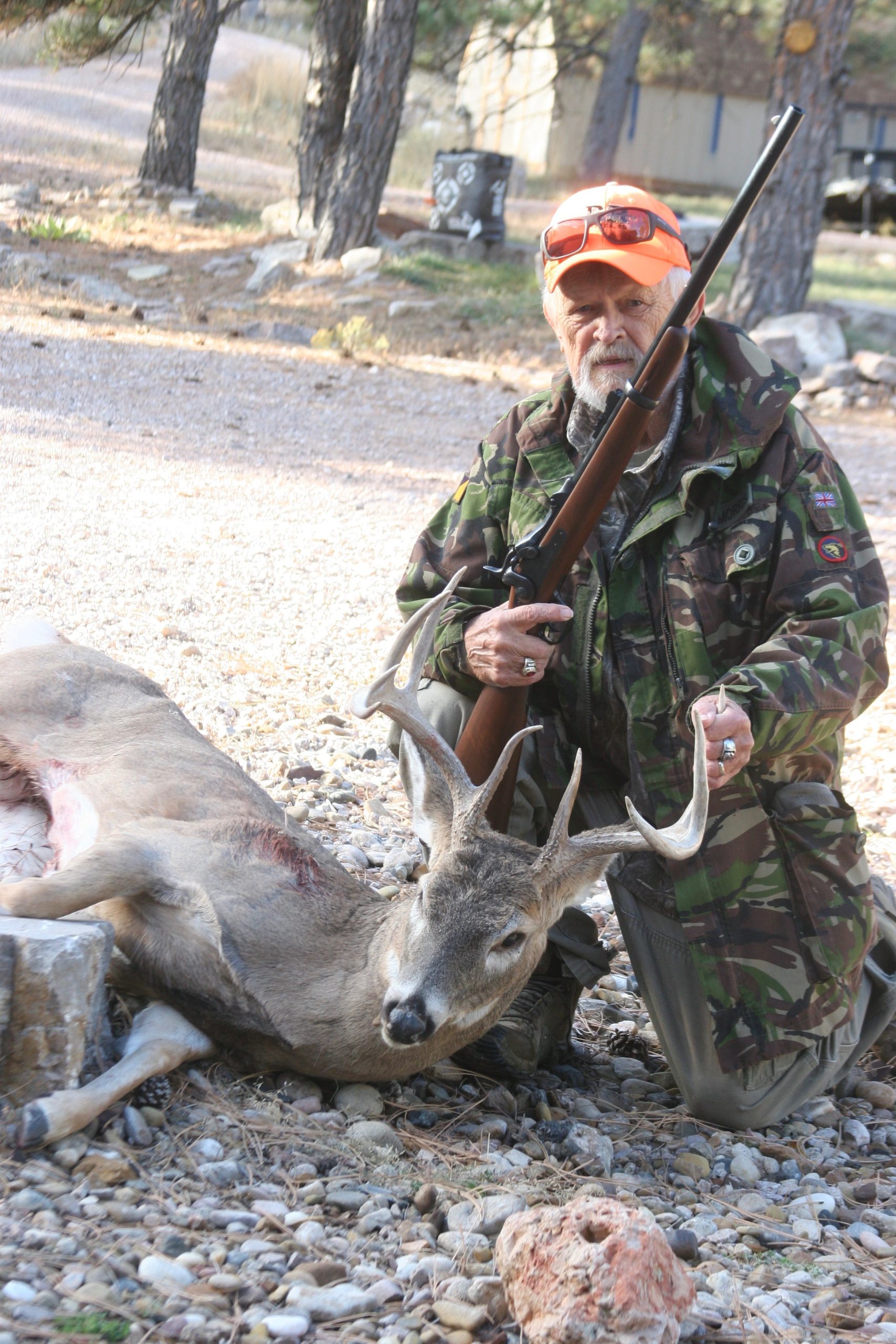
Firing the rifle simply required pulling the hammer to full cock, sighting and sending the mail downrange. When the trapdoor is opened, the cartridge ejects automatically, making way for the next round. The system is quite fast to work with. Custer would have done far better if the ammunition had been of a better design and quality.
The “set” trigger system on my Uberti rifle is outstanding. Push the trigger forward and it drops off in pounds to about half the normal let-off weight, which is not bad at all. With the use of the shallow V, ladder and peep sight combined, this rifle was designed far more than generally considered by most shooters as a very accurate, iron sight rifle.
Zero printing by way of 300 grain pills indicated that the peep sight retained added elevation of four inches at 50 yards, and about the same at 25 yards. As this rifle was shot from a ground blind used for bow hunting, this ultra-close range, iron sights and my old eyes made for solid game-taking.
The Springfield Trapdoor 45-70 would see work by this gun writer for whitetail winter meat gathering here in the South Dakota Black Hills. Geronimo knew what he was doing when he held on to one of these captured rifles.
In terms of a possible scope sight, I have checked out many Springfields while working gun shows and hanging around Dakota gun shops. I have never seen a scope mounted on this carbine, save for one pictured over the internet. In that case, the mount was a left-side mount system that looked like the saddle ring rail was the base, but I am not sure. The photo indicated that the scope was a small, short, steel tube about one inch in size, and it seemed as though elevation and windage adjustments were accomplished by way of the solid brass mount itself. Again, however, I am not at all sure about this past observation.
Are you enjoying this post?
You can be among the first to get the latest info on where to go, what to use and how to use it!
I do know that I have handled Springfields reworked using smooth bore barrels as small game guns, U. S. Army troopers had to live off the land. I have seen a sadly butchered, long-barrel rifles as cut-downs from full-length infantry rifles. Because the Springfield Trapdoor requires opening the entire top end of the receiver to load the rifle, almost any scope system is not going to be very functional on this rifle.
Ammunition selected for use in the Uberti rifle was on the lighter side. Uberti had advised staying away from ultra-modern, high-velocity 45-70 loads. As such, I elected to shoot Federal Fusion, and Winchester in 300-grain jacketed, soft-nose bullets. This is a lightweight load choice, as even back in the day (1884), Springfield Trapdoors shot 45-70-500 which indicated a 500-grain pill was sent downrange like an artillery round. The 45- 70 was never created as a fast mover cartridge, but it was designed to shoot to the British standard, using very heavy bullets with extreme accuracy, and high kinetic energy.
Added elements include staying with the original musket-style trigger guard, and a left-side receiver bar and saddle ring that fit a trooper’s carry or saddle sling. It may now be the year 2024, but this gun was built correctly from the get-go, which includes the small features as well. I find hunting with these classic designs just flat-out fun.
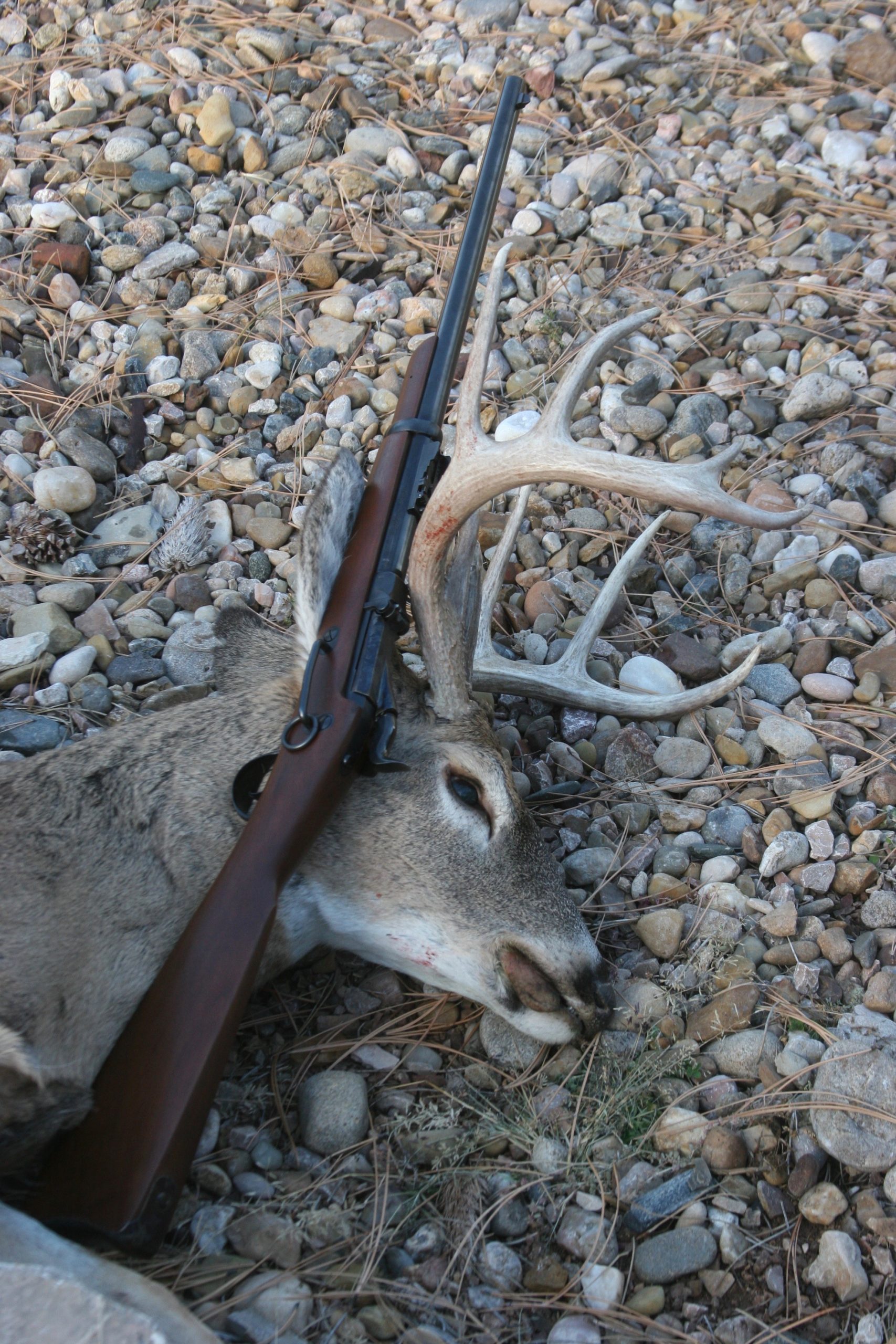
Trapdoor field application
It was snowing, and just five days away from the Black Hills rifle season opening day. Five years had gone by without a “Hills” tag. Now with one in hand, and with some luck, the Springfield 45-70 would see some heavy-duty work during the days to come.
Selecting the high timber country as a deer hunting test area for whitetails, it was game on.
I had been scouting and blueprinting several good bucks at the time. The rut was just coming into play, and my local doe population was in good shape. I figured that by covering several crossing trails that came up from deep canyons, spread out through tens of thousands of acres of government timber, my chances were good at connecting on a good buck.
I had also been watching a nice whitetail buck for several days during the stick and string season. He had used the same route every evening in terms of moving to a night location on higher ground. At close to day’s end, I spotted this solid 4 X 5 animal with a doe. With luck, the doe would also move my way and bring the old guy with her.
Using shooting sticks and a small seat pad, I locked up dead still as possible against a large pine tree base (turkey hunter style) and covered the game trail that crossed a small meadow. The shooting range was tasered at exactly 63 yards. I had been shooting Federal Fusion and Winchester 300-grain bullets at just about the same range, using the peep sight under the now-raised ladder sight. All I would require now was enough light for my aging eyes to get a clear sight picture.
I had hunted buffalo extensively on the triple U with my Sharps 45-70 some years prior, and when a 45-70 load can drop a bull buff dead in his tracks at 170 yards, this was a walk in the part for this old big-bore Custer battlefield rifle. During my years hunting commercially in Australia, I would have liked very much to have had this rifle cartridge when taking on red stag, large hogs and mature gray ‘roo.
The doe cleared the timber and walked into the small meadow with just enough light to pick her up in my old carbine’s peep sight. Following her without a doubt would be the buck that had most likely thrown caution to the wind. Hoping the doe would not bust the plan, I checked the rifles hammer for the full cock position.
Everything came together as the buck emerged into the open field. As he walked out, he stopped and froze, looking straight at me, but with a slight turn to one side. That was all I needed, and with a slight touch against the rifle’s set trigger, the deer was knocked off its feet on the ground. One and done is the term I would use here, being the 300 grains of hollow point jacketed lead core slug had blown quite a hole just behind the shoulders.
This was only the beginning for a series I intend to write covering three of my 45-70s as game takers and heart breakers in the field. I like the fusion 300-grain because it is easy on some very expensive rifles. Trapdoors are not known to handle high-velocity and steep pressure rounds well, and my other rifles—a 1895 Marlin/ Ruger lever action and a Pedersoli Sharps—also require tender loving care afield. Some advice here. Watch what you shoot in your Trapdoor 45-70s; keeping muzzle velocity at or about 1800 f.p.s. is advised. If the cartridge box says do not shoot in a handgun, don’t shoot it in a Springfield Trapdoor, either.
MWO
SHARE THIS POST
Did you enjoy this post?
You can be among the first to get the latest info on where to go, what to use and how to use it!
L.P. Brezny
Writing on outdoor subjects for over 40 years, L.P. Brezny has written four books on shotgun and rifle (ballistics and performance). He’s an expert at smoothbore, and high-power, ultra-long-range shooting. He’s a specialist, producing reviews covering general products used in the outdoors industry.
